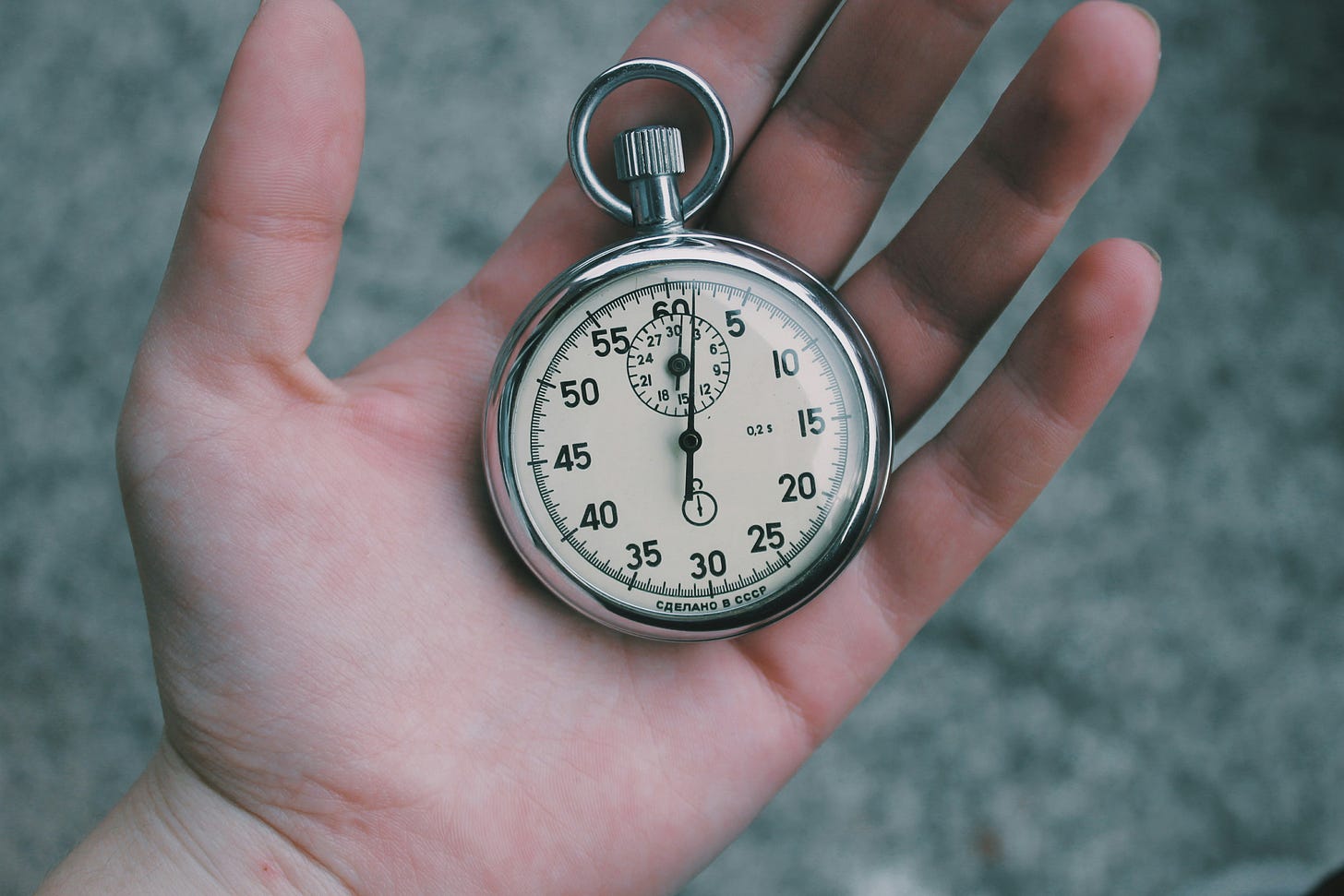
One of the considerations your NaNo writers will need to weigh when launching their WriMo experience is the time it will take to tell the story they want to tell. I’m not talking about how long it will take them to write the story, but how long –in fictional days, years, eons–it will take for the story they want to tell to unspool on the page.
Will the story unfold over a fictional summer? An academic year? The decade between the main character’s 20s and 30s? Or will it take place, like James Joyce’s 783-page Ulysses, during a single day? Or is it like Kate Chopin’s brief, but intense short story, “The Story of an Hour,” detailing how one’s fortune can change, then change again, then change again in just one hour?
In Joan Silber's The Art of Time in Fiction, she addresses how time not only frames a story but also dictates its meaning.
Fiction imagines for us a stopping point from which life can be seen as intelligible - the “complete quiet” (another translation of Kierkegaard calls this the “necessary resting place”) that allows for understanding, the angle of retrospect, which is the storyteller’s premise. A story is already over before we hear it. That is how the teller knows what it means.
By determining where the story begins and ends, an author’s choice of time creates meaning. A writer decides to drop a set of parentheses around a few events in the characters’ lives and not another set in the same time continuum that is the character’s fictional life story. There is life on either side of the parentheses that impacts what happens inside the parentheses. But it’s the choice of dropping the “Once upon a time…” and “The End” at those specific moments that constructs the meaning of the story we are reading. Silber writes, “All the dilemmas in organizing time are grounded in this first decision about how long it takes.”
A Few Categories of Time in Fiction
In classic time, the plot moves linearly across a natural span of time, such as a month, a season, or a year. Writers using classic time rely heavily on concrete scenes, economical and deft summaries, and dialogue that moves the plot, heightens the stakes, and flavors the characters. These three elements are patterned throughout the plot leading to a satisfactory ending.
In long time, a writer is encompassing decades, centuries, lifetimes, sometimes in a very short package. Homegoing by Yaa Gyasi, for example, traces the history of Ghana over three centuries, and Anthony Doerr’s Cloud Cuckoo Land plays with time-intertwining characters in stories that span centuries. By moving over vast periods, writers rely on narrating a lot of time punctuated with sharply drawn scenes and details that speak to the passing of time so that years must go by in one scene or one sentence. Summary that unfolds like scenes are best used to move the reader through years without the pacing either dragging or speeding away.
In switchback time, the plot moves back and forth among points in the past of characters’ histories that seem to fuel the character’s present-time hopes, fears, and decisions. Silber suggests that a switchback story design “uses the shifts in an order that doesn’t give dominance to a particular time. Then and now and further back are all partners with an investment in the outcome. Their separate roles are essential to the point the story is making; one isn’t a footnote to the other.” The key to using this frame is to always supply “markers” to the reader, so we know where we are. My suggestion to my students who are traveling along the track of two different plot lines: Take the reader with you.
Instructions
Invite student writers to ask the below series of questions about the framing of time in their novels and write the answers in their writing notebook. Share and discuss.
Where in time does the novel start? Why have you decided to start the novel at this place in the fictional life story of your main character or the world of your story?
When in time does the novel end? Why have you decided to end the novel at this place in the fictional life story of your main character or the world of your story?
What happens before the beginning of the story you are telling in your novel?
What happens immediately after the ending of the story you are telling in your novel?
What happens in the far distance after the ending of the story you are telling in your novel?
What is the frame - classic, long, or switchback time- you are using in your novel? Why have you chosen this frame?




Liz, this post and the last are so valuable, even for non-NaNoWriMo students. I absolutely love the examples you've gathered.
(Well, to be honest, I hold a special hatred for Ulysses/most James Joyce and always will, so I would substitute Mrs Dalloway... but otherwise... perfection!)